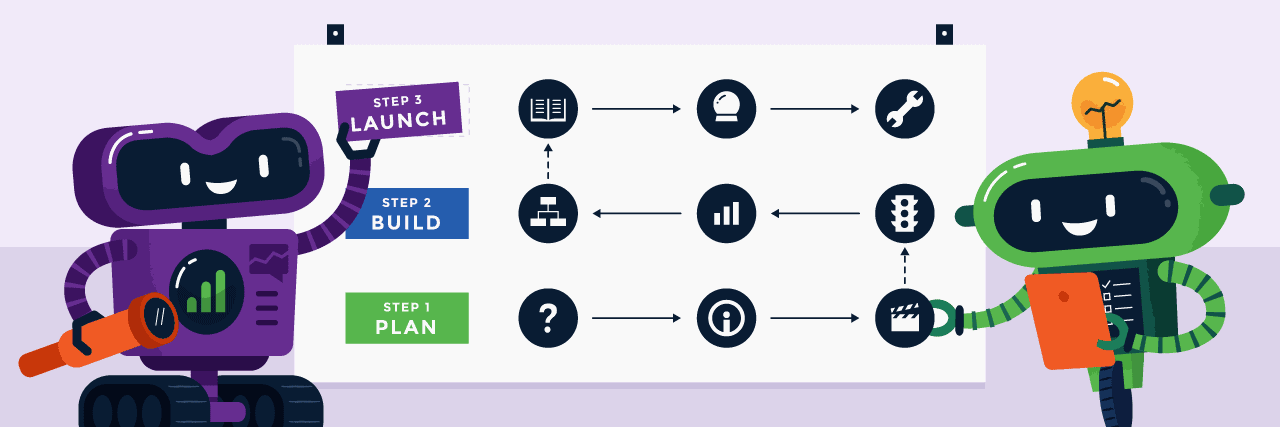Most modern digital marketing tools are, if not free, then definitely something that's at everybody's disposal. The difference between a successful campaign (or a successful marketer, for that matter) and an unsuccessful one lies in the way these tools are used, in the mindset of the marketer. Measurement isn't at all about the tools, it's the mindset.
This post – and the framework it describes – describes what we found to be the best way of using these tools.
The promise of the Measurement Marketing Framework is to help you discover a step-by-step system for helping you ensure your marketing predictably grows revenue and increases profitability in your business in 90 days or less.
Who is the marketing measurement framework for?
You'll find the following useful:
- if you have a website with traffic coming to it (any kind of traffic – paid, email, social, SEO, etc.);
- if you're an online marketer (any kind of marketer – content, e-commerce, direct response, etc.);
- if you want to know what's working & what's not;
- if you've ever been confused or overwhelmed by any analytics tools.
Who is it NOT for?
This framework is not a one-size-fits-all solution. It won't be what you're looking for if you're:
- not willing to try something new;
- looking for a short term fix. We need to develop systems to fix both today and tomorrow's problems;
- not willing to change;
- looking for a “push button” simple solution. There is no such thing – just like most meaningful things in life, if it's going to be worth it it's going to take time, effort, and energy. This is a skill you develop for the long term, and that development takes time.
The three problems with Marketing
The way we're going to present the framework in what follows is by focusing on the three main problems we've identified with digital marketing nowadays. These are three core problems that most of our clients and students share, and that we've used to help structure a lot of our teaching materials around.
Problem #1: No Clear Roadmap
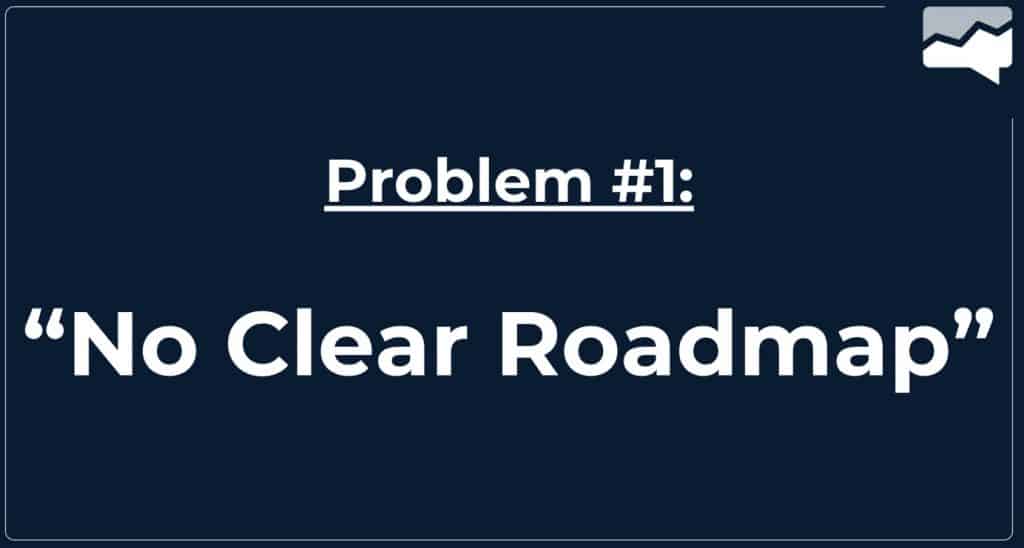
What next? – for many of our clients and students, this is usually followed by a shrug and a reactive decision to, well, react to the situation they somehow landed in.
This is actually so widespread that I don't think most people even realize that it's a problem. Instead, they figure it's just the way you handle digital marketing – by reactively, sometimes impulsively, making decisions and hoping for the best.
The biggest 3 frustrations when it comes to this first problem people encounter in digital marketing are:
- being unsure of the questions you need to ask yourself when building a plan
- being unaware of the information that should be collected
- being unprepared to take actions.
Solving Problem #1: PLAN
Your goal should be to flip that around, be sure what best questions you need to ask are, become aware of the information you need to review, and be prepared to take actions based on that information.
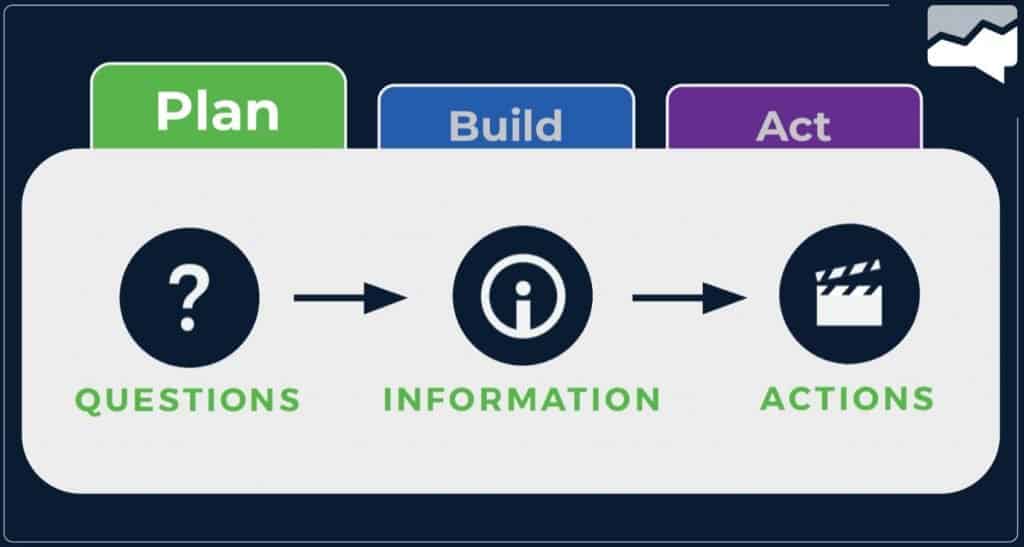
QUESTIONS
The secret sauce to being sure of which questions you should ask as a marketer boils down to this: what results are you getting? How are you getting them? That's it.
When you're first planning things out this is literally everything you should be asking yourself and the tools that are reporting to you. Once you get more granular and you start analyzing things in more detail, you'll obviously go deeper into things, but to begin with this is what you should know.
Ask yourself things like: how many sales did we get? What's our average cart value? How many leads did we get? Also – how? What's the source of all of these results?
INFORMATION
Once you ask the right questions the right information will inevitably surface and start answering those questions for you. But the key insight here is behavior.
A lot of the time it's easy to fall in the trap of seeing numbers on a screen and forget that those numbers are a quick representation of something more. In our case, you're not just tracking clicks or sales, you're tracking a user's behavior. Putting in a credit card number is an action, it's a sale, but it's a behavior first and foremost.
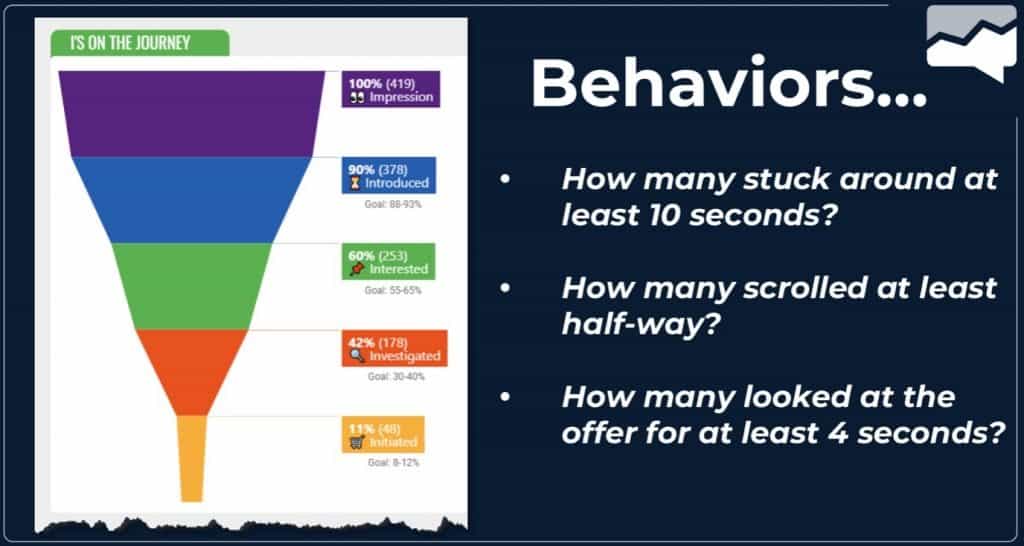
ACTIONS
This is the step that people usually take at first – in fact, it's the only step people usually take. And acting is the right thing to do, without changing anything results won't change for the better by themselves, after all. But an action needs to be based on the right information.
So after you ask the right questions and collect the right information from answering them, take action. Make every piece of information count – as programmers say: if this, then that. For example, these actions can look like this:
- “if the overall conversion rate is higher than 3%, I will expand my targeting.”
- “if the overall conversion rate is lower than 1%, I will rework the messaging.”
Try to plan a few actions like these in advance, so when faced with the triggers you'll have a roadmap to follow.
Problem #2: Chaotic Reports
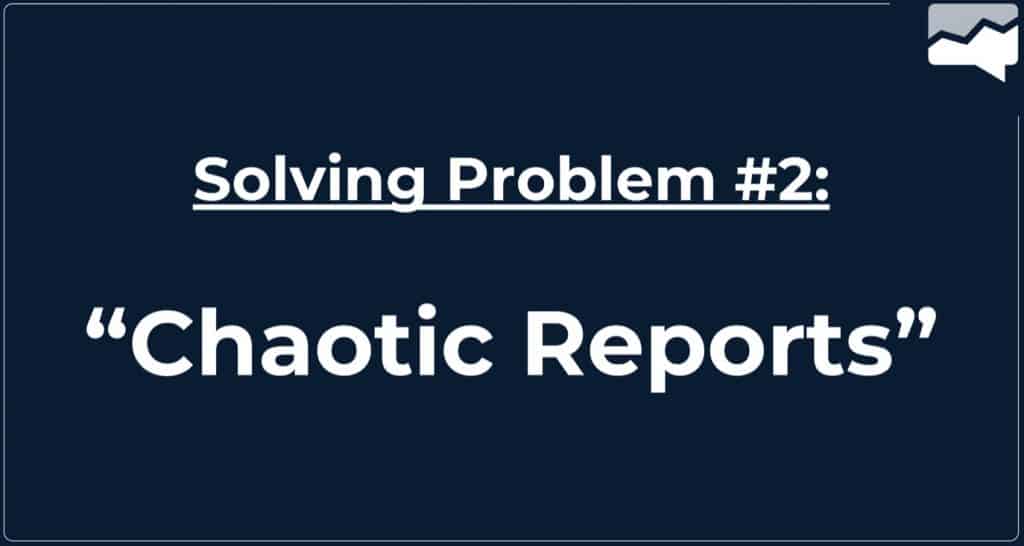
Chaotic reporting systems stem from having an incomplete (or non-existent) plan to begin with. Whenever you look at a report and feel that deep down, you have no idea what it means and what the report is actually telling you, that's a sign that your chaotic reporting system is just throwing numbers at you instead of telling a story you can use.
The biggest frustrations marketers have when it comes down to chaotic reporting are:
- You don't know where your traffic is coming from.
- You don't know what the results actually are.
- You don't know how the traffic is producing those results.
Solving Problem #2: BUILD
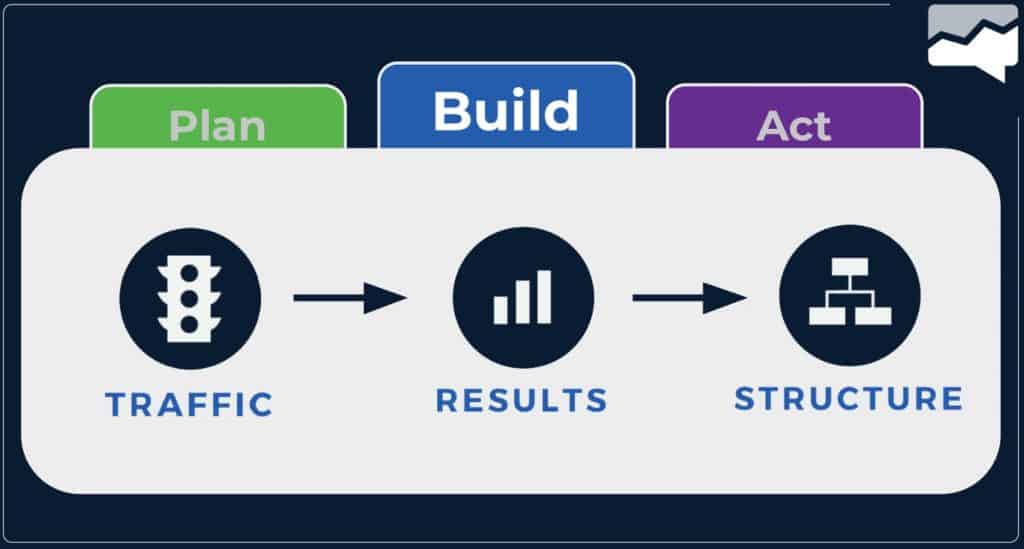
Before you actually get into actually building something, make sure you don't skip ahead to it and you build according to a plan!
Once you have that plan though, there are three things you can do to make sure you're measuring what matters and acting on that appropriately: focus on the traffic, the results, and the structure.
TRAFFIC
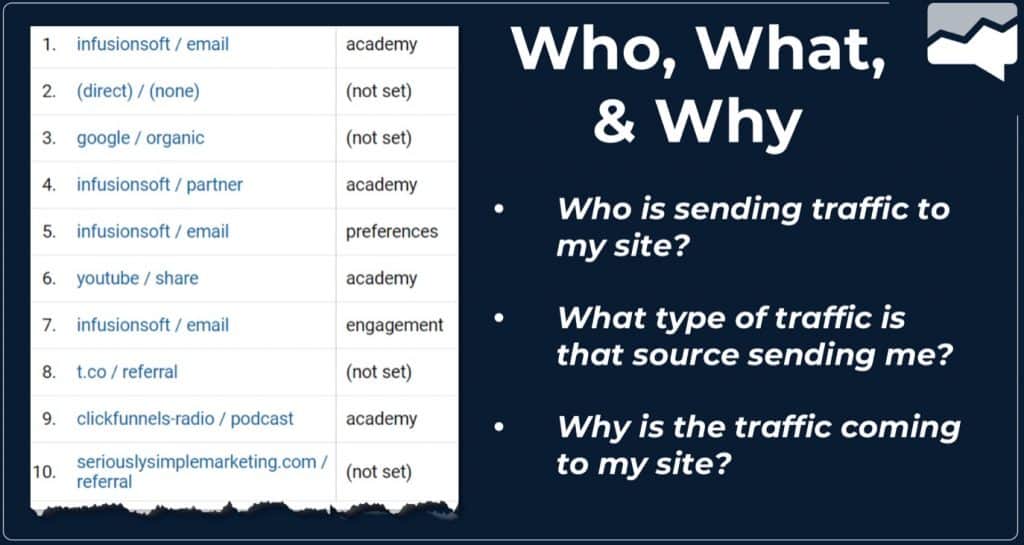
Who is sending you traffic? What type of traffic are they sending you? Why?
Those are the three questions that you need to answer in order to figure out your traffic. And don't just answer them, make them an integral part of your reporting structure.
Let's take an example from our structure above – everything tells a story in a few words. For instance, whenever I see “infusionsoft / email | academy” I know that our CRM, Infusionsoft, is sending us visitors through email for our academy. It's that simple.
Having this structure in place will avoid your reports looking like an unstructured mess, and it will help you accurately measure your results.
RESULTS
Remember, to track results you need to A.C.E. your goals! Awareness, Completion, Engagement goals are the key to accurately tracking results and having them tell the right story. These goals and the rate at which users reach them tell you a lot about the customer journey:
How many users are aware of the journey? How many users complete the journey? How many people engage along the way?
We talk about A.C.E. goals a lot at Measurement Marketing, so here's a video that dives deeper into them:
STRUCTURE
Stitch a story. Take things one step further from just measuring traffic and structure the story that the traffic is telling you in a way that will help the right decisions surface.
Ask questions like “What type of traffic is more likely to make users aware of my goal?”, then look at your reports to identify just that. How about traffic that helps users complete the journey? What makes them engage more?
This is where you use data to your advantage. Don't let numbers stay as numbers, put them into sentences and construct a story that helps you decide how to improve.
Once you understand the role of one traffic source and put them all together you'll understand the entire machinery. Use the traffic and the results together to tell the story of your visitors, and ultimately your clients.
Problem 3: Random Acts of Marketing
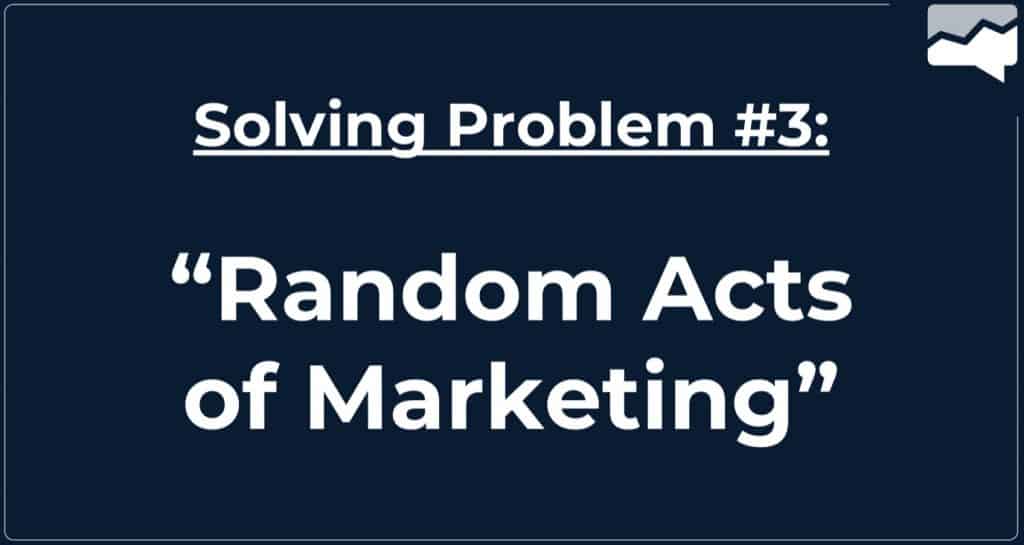
The problem that a lot of people face is that they are reactive. Something happens (or doesn't) and the urge is to make a quick change and hope it translates to a step made towards the goal.
The biggest 3 frustrations people have in relation to this third problem we're trying to solve are:
- Confusing. When you initially jump into reports they don't tell you a story, and having a lot of unstructured information is definitely overwhelming.
- Reacting. A lot of times you end up reacting to stuff – instead of a plan, you end up reacting to the immediate situation.
- Guessing. When you're trying to optimize stuff you end up guessing your next steps and hoping for the best.
Solving Problem #3: ACT
The goal is to act in a proactive way and move from things being confusing to them being clear, from reacting to being proactive, from guessing to being confident in our actions.
There are three steps in achieving this: Read, Forecast, and Optimize.
READ
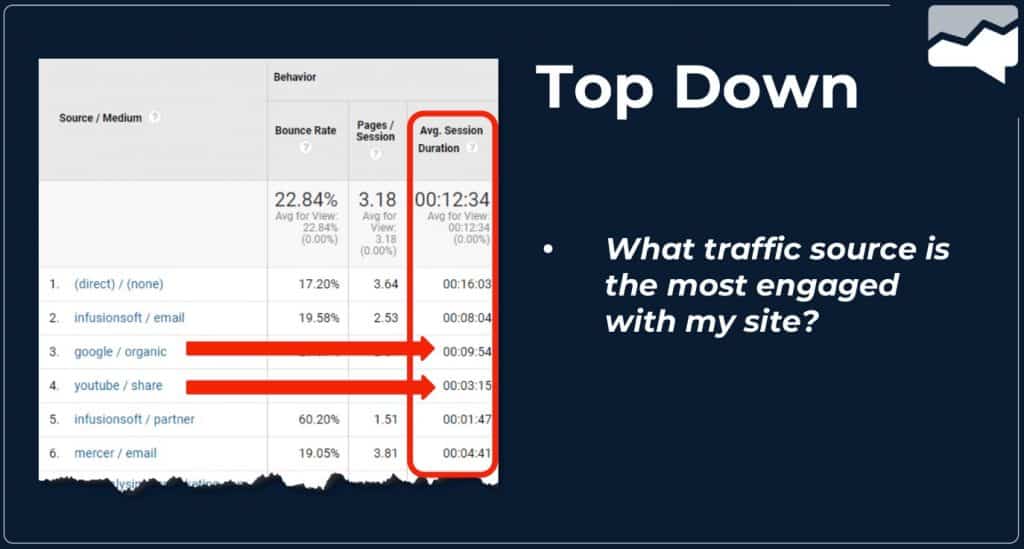
Top down, that's how you look at your stats! But don't just read numbers, keep comparing them to the average, and to other sources, in a way that tells a story.
Ask yourself questions like: how long did our visitors from Google spend on our website?
How does that compare to the average?
How does that compare to direct traffic, or traffic that our partners send us?
What story does this have for me?
FORECAST
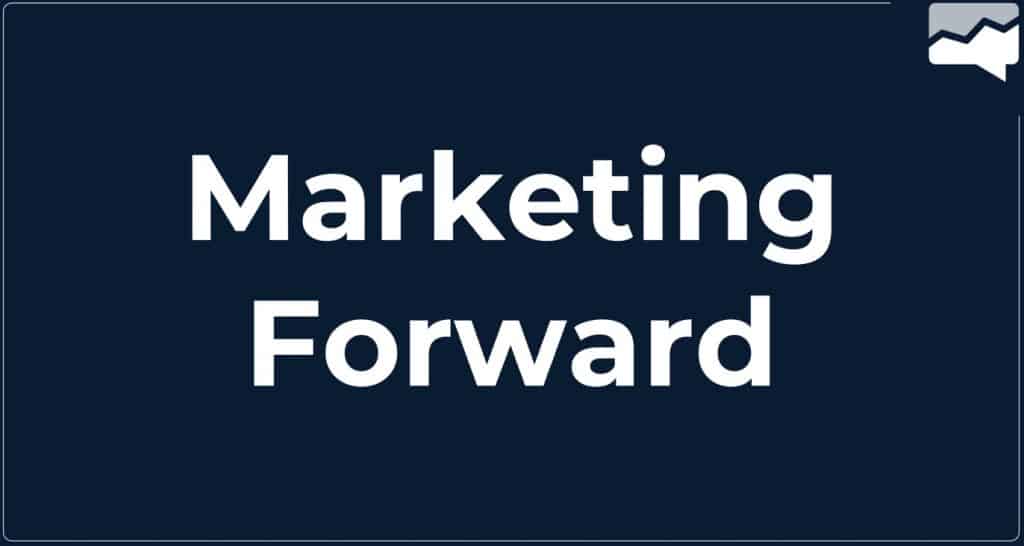
Keep marketing forward.
Forecasting is all about moving from being reactive to being proactive. Don't base your decision solely on what happened in the past. Reactive questions are “What happened with the money we invested in Facebook Ads last month? How will that affect our decision moving forward?”.
Instead, keep marketing forward. To the best of your abilities (especially knowing that nobody can predict the future with accuracy), we need to forecast what's going to happen based on decisions we make.
Let's say we're considering changing our Facebook Ads budget – instead of the reactive questions above, we try to forecast what's going to happen, so if we use some placeholder numbers we'll say, for example:
We're going to give Facebook $1,000 and we expect:
100,000 impressions
1,000 page views to our site
25% of those who visit will opt in
Within 7 days they will make a purchase and we'll generate $X in revenue.
Once you want to review performance and make changes, you'll not just commit random acts of marketing – you can see where in this story things broke down, and have a solid start to base your changes on.
OPTIMIZE
This is the last step we will get to in this breakdown, but it's usually the first step people take. If this is the first thing you'll do, you'll likely end up guessing – when people start optimizing without doing all of the legwork beforehand they usually make mistakes because they simply haven't earned the right to optimize.
The secret sauce to optimization is the expectation engine. Every step that you establish in your customer journey, every step that people go through to complete it, has a certain expectation and sets an expectation for the next step.
That works both ways – you have an expectation as a user, as a visitor on a page, and as a marketer for how that user is going to react. What was the expectation that the prior step has set? Did this step match that expectation? What expectation is it setting for the next step?

One example we faced a few years ago here at Measurement Marketing was when we noticed our CTR to the cart page was 40%+, when our average is usually between 8% and 12%.
There is such a thing as having a click-through rate that's too good, and in our case we also noticed that our abandon cart rate was through the roof.
By having a good grasp on the expectations that each step had and had set for the following step, we were able to quickly (within a day!) identify the issue: we didn't have our pricing displayed on the offer page, and people were clicking through to get that one piece of information.
Reviewing the framework
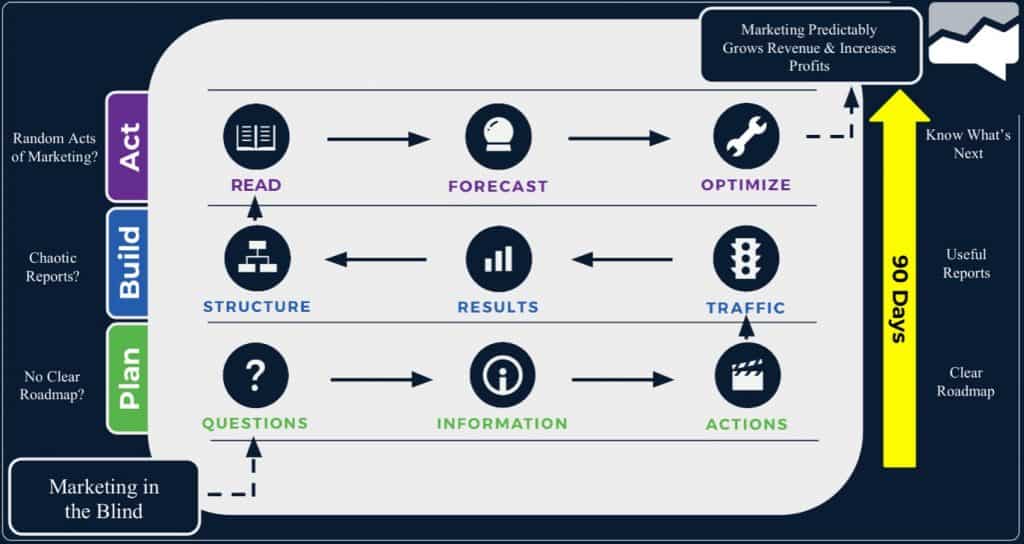
Plan your marketing efforts around the three stages above, and practice each stage's three steps and you're guaranteed to have a much better understanding of marketing and the importance of measurement – this will no doubt have an impact on results, as well.
To recap, here is what the three steps of the measurement marketing framework are:
Plan: what questions should we ask? What information do we need to determine behavior? And finally, what actions will we take based on the answers we get to the questions we ask?
Build: determine the who/what/why of the traffic, set clear A.C.E. goals to track results, then use them to formulate a story that shows you reality in more than just numbers.
Act: with a good plan in place and reports to paint the picture, we read these reports, then market forward by forecasting what our actions will accomplish, and finally periodically optimize our entire system by measuring actual traffic against our forecast.
This system is not a button you push to magically get more visitors. It's a process that takes around 90 days, a skill that you earn by doing the work. Keep that in mind and you'll already have made the first step!
Putting it all together: the Measurement Marketing Academy
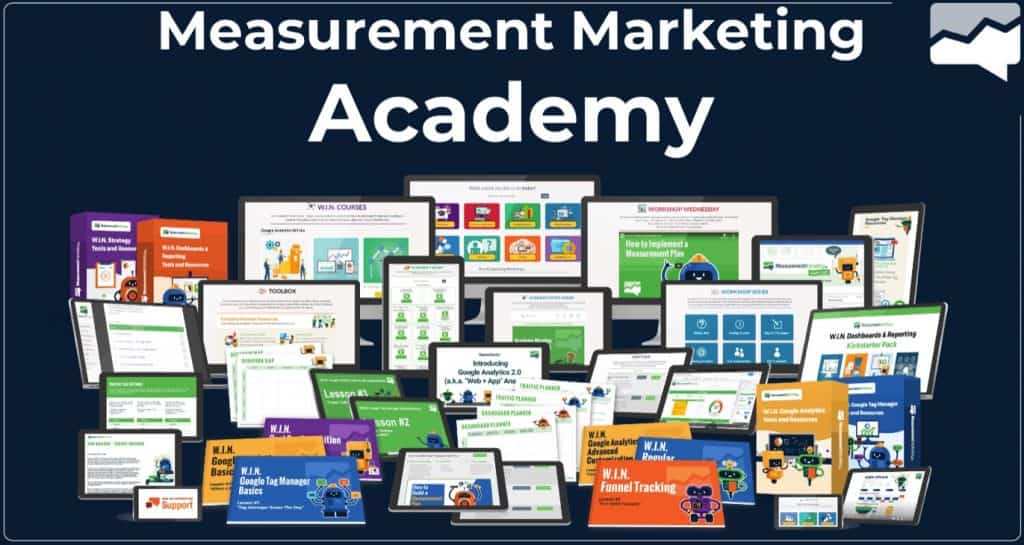
This has been a broad overview of the types of tools, techniques, and teachings that we feature in our Academy for Marketers.
We cite it often, but that's because we put everything we know in it – the academy is a roadmap to unlocking the full potential of the most recent tools and techniques a marketer needs to thrive.
If this has all been interesting to you consider joining the Academy for Marketers!
